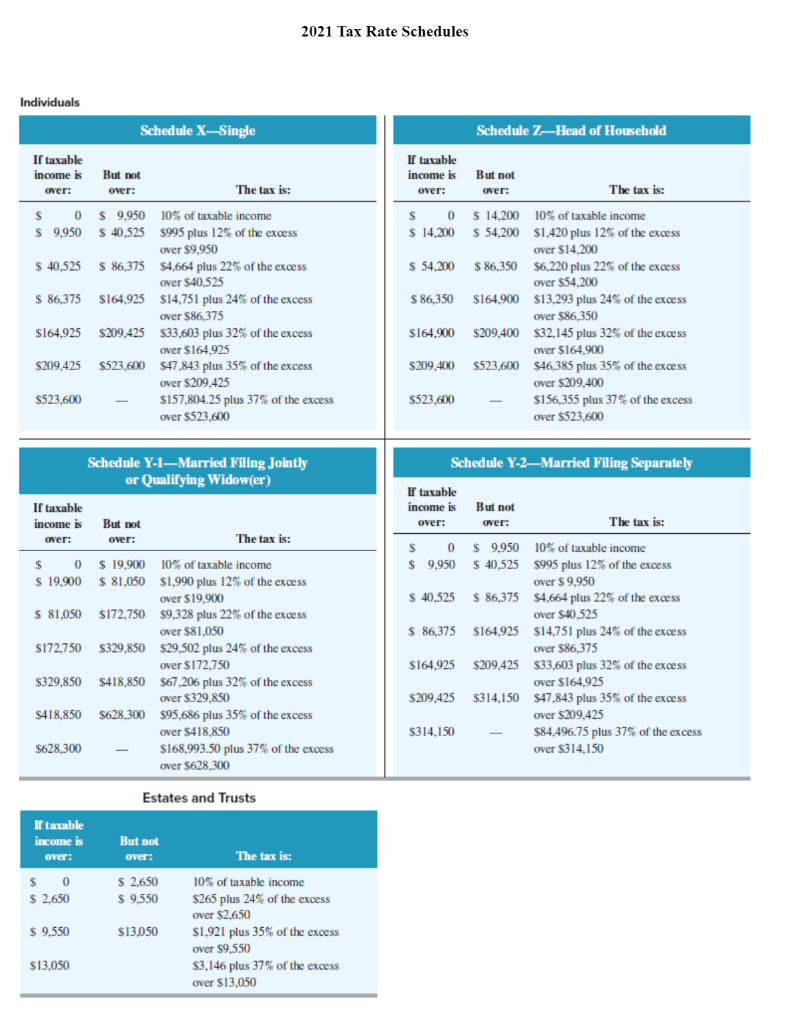



38. Isabel, a calendar-year taxpayer, uses the cash method of accounting for her sole proprietorship. In late December she received a $20.000 bill from her accountant for consulting services related to her small business. Isabel can pay the $20.000 bill anytime before January 30 of next year without penalty. Assume her marginal tax rate is 37 percent this year and next year, and that she can earn an after-tax rate of return of 12 percent on her investments. When should she pay the $20.000 billthis year or next? planning LO 3-2 LO 3-3 39. Using the facts from the previous problem, how would your answer change if Isabel's after-tax rate of return were 8 percent? 40. Manny, a calendar-year taxpayer, uses the cash method of accounting for his sole proprietorship. In late December he performed $20,000 of legal services for a client. Manny typically requires his clients to pay his bills immediately upon receipt. Assume Manny's marginal tax rate is 37 percent this year and next year, and that he can earn an after-tax rate of return of 12 percent on his investments. Should Manny send his client the bill in December or January? LO 3-3 48. Assume Ellina earns a 10 percent after-tax rate of return and that she owes a friend $1,200. Would she prefer to pay the friend $1,200 today or $1,750 in four years? planning 2021 Tax Rate Schedules Individuals Schedule XSingle If taxable income is But not over: over: The tax is: $ 0 $ 9.950 10% of taxable income $ 9,950 $ 40,525 $995 plus 12% of the excess over $9.950 $ 40,525 $ 86,375 $4,664 plus 22% of the excess over $40.525 $ 86,375 $164,925 $14,751 plus 24% of the excess over $86,375 $164.925 $209,425 $33,603 plus 32% of the excess over $164,925 $209,425 $523,600 547,843 plus 35% of the excess over $209,425 $523,600 $157,804.25 plus 37% of the excess over $523,600 Schedule 7Head of Household If taxable income is But not over: over: The tax is: $ $ 14,200 10% of taxable income $ 14,200 $ 54,200 $1,420 plus 12% of the excess over $14,200 S 54,200 $ 86,350 $6,220 plus 22% of the excess over $54.200 $ 86,350 $164,900 $13,293 plus 24% of the excess over 586,350 $164,900 $209,400 $32,145 plus 32% of the excess over $164.900 $209,400 $523,600 $46,385 plus 35% of the excess over $209,400 $523,600 $156,355 plus 37% of the excess over S523,600 over: Schedule Y-1-Married Filing Jointly or Qualifying Widow(er) If taxable income is But not over: over: The tax is: $0 $ 19,900 10% of taxable income $ 19,900 $ 81,050 $1,990 plus 12% of the excess over $19,900 $ 81,050 $172,750 $9,328 plus 22% of the excess over $81,050 $172,750 $329,850 $29,502 plus 24% of the excess over $172,750 $329,850 $418,850 $67,206 plus 32% of the excess over $329,850 $418,850 $628,300 $95,686 plus 35% of the excess over $418,850 $628,300 $ $168.993.50 plus 37% of the excess over $628,300 Schedule Y-2Married Filing Separately If taxable income is But not over: The tax is: $ 0 $ 9,950 10% of taxable income $ 9,950 $ 40,525 $995 plus 12% of the excess over $9.950 $ 40,525 $ 86,375 $4,664 plus 22% of the excess over $40.525 $ 86,375 $164,925 $14,751 plus 24% of the excess over $86,375 $164.925 $209,425 $33,603 plus 32% of the excess over $164.925 $209,425 $314,150 $47,843 plus 35% of the excess over $209,425 $314,150 $84,496.75 plus 37% of the excess over $314.150 Estates and Trusts If taxable income is over: $ 0 $ 2,650 But not over: $ 2,650 $ 9,550 The tax is: : 10% of taxable income $265 plus 24% of the excess over $2,650 $1,921 plus 35% of the excess over 59,550 $3,146 plus 37% of the excess over $13,050 $ 9.550 $13.050 $13,050










